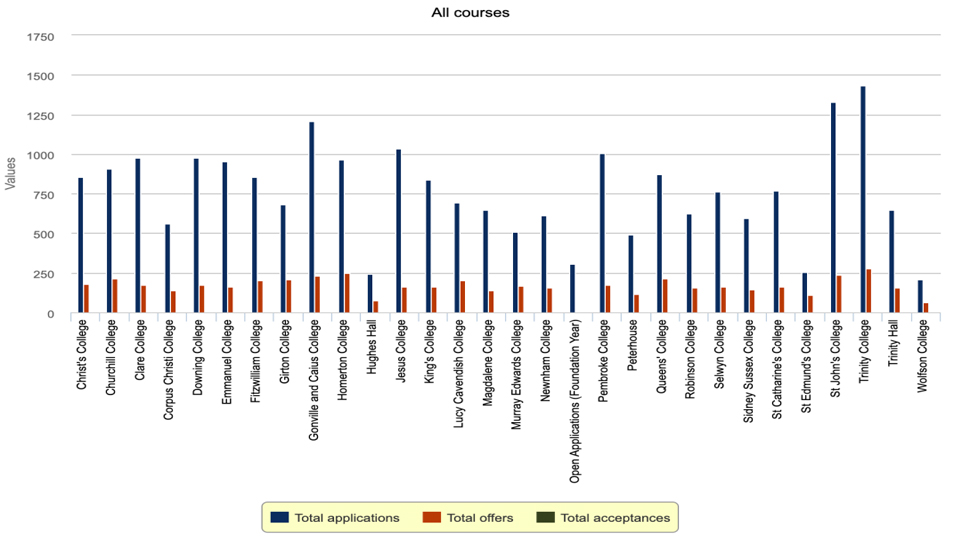
Cambridge University’s 2025 undergraduate admissions data analysis is here! What are the most popular majors?
Overall:
The total number of applicants has remained nearly the same over the past five years.

This year, the total number of applicants to Cambridge was 22,817, a slight increase from 22,501 last year.
The number of offers, or pre-admissions, was 4,944, compared to 4,813 last year.
The acceptance rate remained the same as last year, at approximately 22%.
It can be seen that small fluctuations in the number of admissions do not affect the probability of admission.
The acceptance rates have increased in both years compared to previous years.
Admissions by Major and College
The most popular major has changed!!!

This year’s most popular major has shifted from Natural Sciences to Engineering!
And Engineering received 600 more applicants than Natural Sciences!
Last year, the number of applicants for the two majors was similar.
We will analyze the acceptance rates by major later in this article.
With the continued development of technologies like AI,
Engineering majors are increasingly benefiting in terms of salary and career prospects.
This may also be due to the increase in the number of applicants.
The top five majors are still mostly science and engineering.
Medicine, which ranked highly last year, is not among them. Law remains the liberal arts field with the most applicants.
Which college has the most applicants?

This year, several strong colleges continued to receive large numbers of applicants:
Trinity: 1,435
St. John’s: 1,330
Gonville & Caius: 1,209
Due to the intense competition,
the acceptance rates for these colleges are also relatively low.
What are the admissions results for popular majors?
Engineering

This year, the number of engineering applications increased significantly,
and this was accompanied by a decrease in the acceptance rate.
The number of admissions to Cambridge Engineering is generally similar each year, so an increase in the number of applicants will directly affect the acceptance rate.
Natural Sciences

Like engineering,
the number of admissions to natural sciences is not significantly affected by the number of applicants.
Although the number of applicants for both engineering and natural sciences has increased compared to last year, the increase in natural sciences has not been as dramatic.
It is important to note that although natural sciences appear to have a higher acceptance rate than engineering, it actually encompasses the branches of physics and biology, effectively a merger of the two majors.
Every year, many students struggle with the choice between the two majors, but a decision shouldn’t be made based solely on acceptance rates!
Mathematics

The application process for mathematics departments has become increasingly competitive. The increasing number of applicants and the declining acceptance rate each year are both worrying.
Mathematics, as a versatile subject, is gaining recognition among more and more people.
In summary, the largest number of Cambridge applicants still come from science and engineering fields, especially for Chinese applicants.



